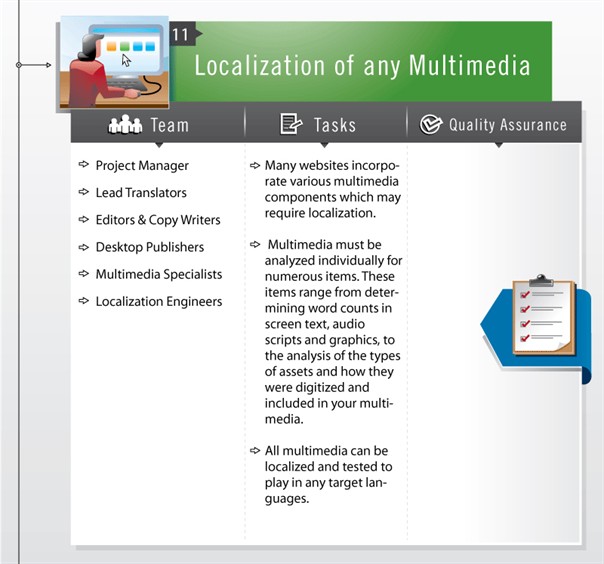Website Translations: Web Content Localization. PART 4
This blog is a continuation of our series on the process of translating a website. To read the other blogs in the series, please see:
- Website Translation: 14 Steps to an effective worldwide website! (Intro)
- Website Translation Quality Assurance and Client Review Process (Two Fundamentals)
- Website Translation: Reviewing Source Files and CMS Workflows (Steps 1-2)
- Website Translation: Launch, linguistics and locales (Steps 3-6)
So far in the series we have covered:
- Introduction to website translation
- Quality Assurance
- Review & Approval
- Review & Analysis of source website assets
- Best practice multilingual workflows based on your content management system
- Project Kick-Off
- Subject Matter Training and Research
- Content Cultural Correctness Assessment
- Glossary & Style Guide Development
Now let’s move on to actually translating or localizing the various types of content found on a global website. Remember from our first blog introducing website translation, that really what we are talking about is creating content that is compelling, consistent and culturally correct in order to communicate and conduct business globally.
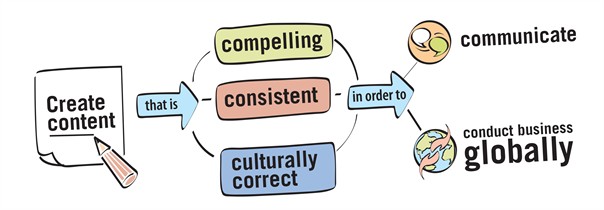
The basic types of content found on a website may include keywords, regular text, graphics, documents and multimedia. So let’s continue with Step 7.
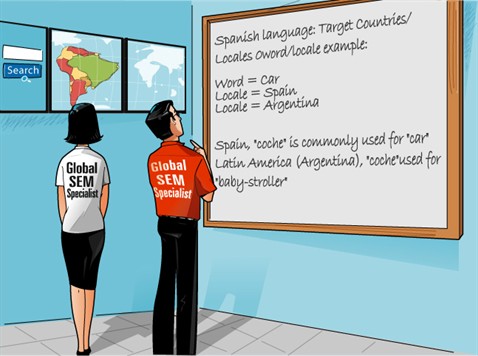
Step 7: SEO – Key Word Research & Localization
Ideally one of the first types of web content you translate or localize is your SEO keyword list. Your project manager, lead translators and global SEM specialists participate in this step. Keyword translation is really a combination of multilingual keyword research, refinement and localization. Keywords translation and SEO copywriting is the process of providing your keywords in different languages helping you achieve the best results in SERPs in the various search engines used around the world. The challenge with translating keywords without SEO copywriting, is while it may serve its purpose to convey the meaning of a word, it may not serve its purpose to be friendly and findable to search engines. The ideal result is to use keywords that a potential customer will actually search for in the target locale when doing web searches.
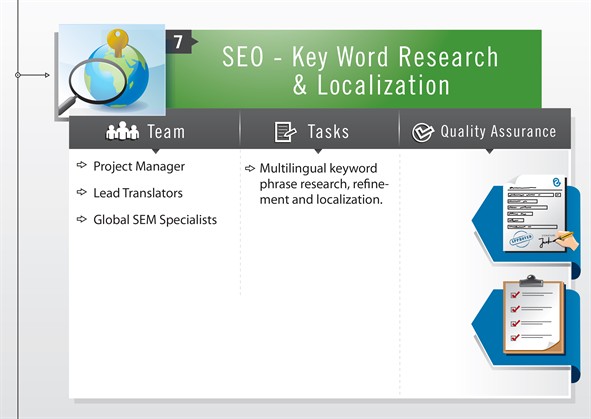
Step 8: Transcreation & Copywriting (Translation, Editing & Proofreading-TEP)
This step is actually referred to in various ways across the translation, advertising and technical writing industries. It is important that a company is clear what they need, and a website translation agency or Global SEO company provides what is expected.
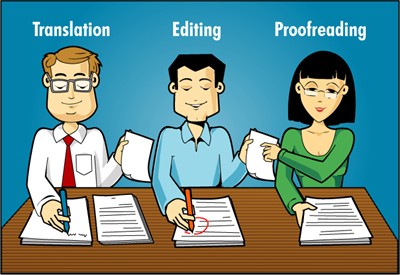
Transcreation and copywriting are used to describe the process of creating content that is accurate, compelling and culturally correct and is common when speaking about marketing communications, web content of various types and promotional videos, etc…
Translation, Editing & Proofreading-TEP are used to describe the process of accurately rendering one language into another and is common when speaking about user manuals, technical guides, instructions, etc…
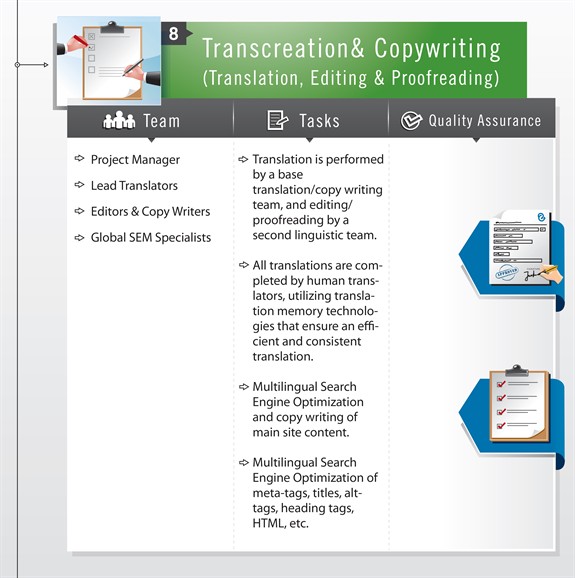
Step 9: Localization of any Graphics
Graphic localization is the step whereby all embedded translatable text found in navigation buttons, web art and other web graphics is extracted from the graphics and then translated in order to be placed back in a new “localized” graphic.
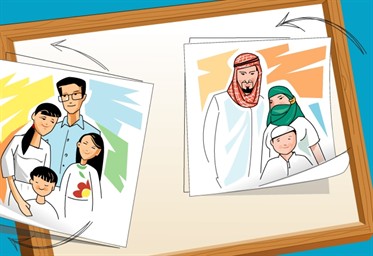
The translated text is incorporated into the original graphic, adjusting as required, to create a language or “localized” version of the graphic. The cultural appropriateness of any images and photos are reviewed and adjusted or replaced as required.
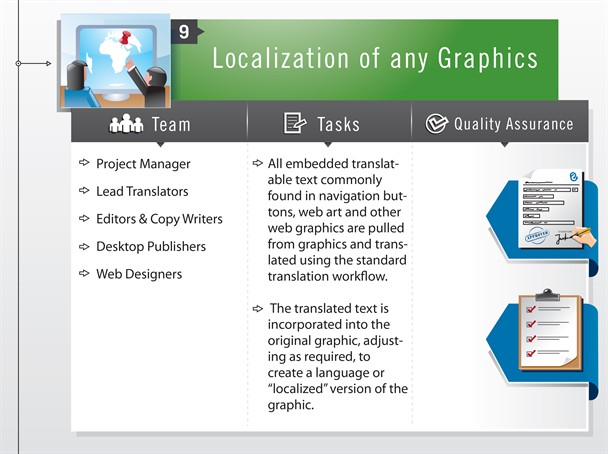
Step 10: Localization of any documents
Most websites have a variety of documentation linked from their site such as reports, white papers and brochures all which may require localization. Translating or copy writing and desktop publishing (DTP) of these documents should be considered as part of a comprehensive website localization project.

Desktop publishing (DTP) includes formatting the target language documentation to match the original source documents in terms of layout, fonts, graphics, and overall design and is necessary to ensure your language material all look the same in terms of look and feel and overall branding. Adobe PDF’s can be created and optimized for screen or print and linked off of the new localized website.
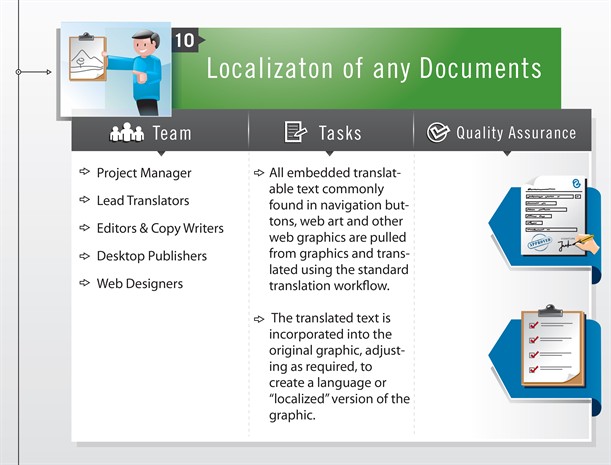
Step 11: Localization of any Multimedia
Many websites use various formats of multimedia which need to be localized as well to ensure a full user experience. Multimedia must be analyzed individually taking into consideration the various assets use to build multimedia. Audio, video, scripts and any on screen character generation all need to be analyzed to determine word counts and how they were digitized and included in your multimedia. All multimedia can be localized and tested to play in any target languages.

A multitude of localization professionals are required for multimedia localization including a Project Manager, Lead Translators, Editors & Copy Writers, Desktop Publishers, Multimedia Specialists (audio & video), Voice Talent and Localization Engineers.
